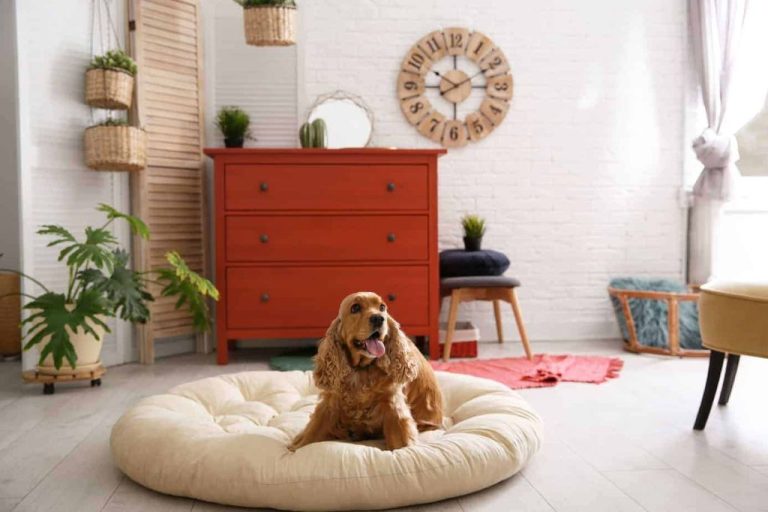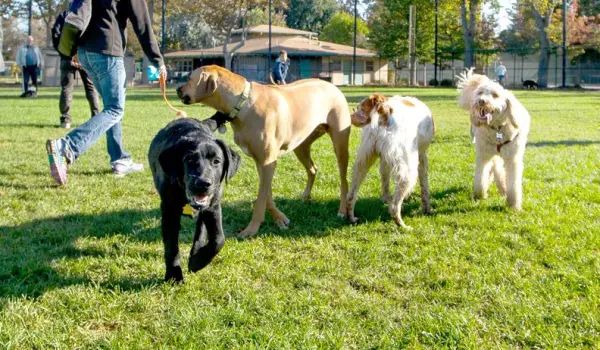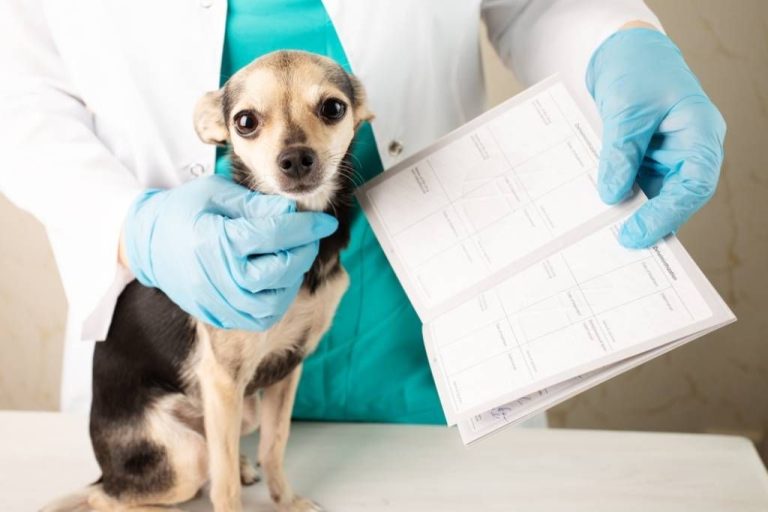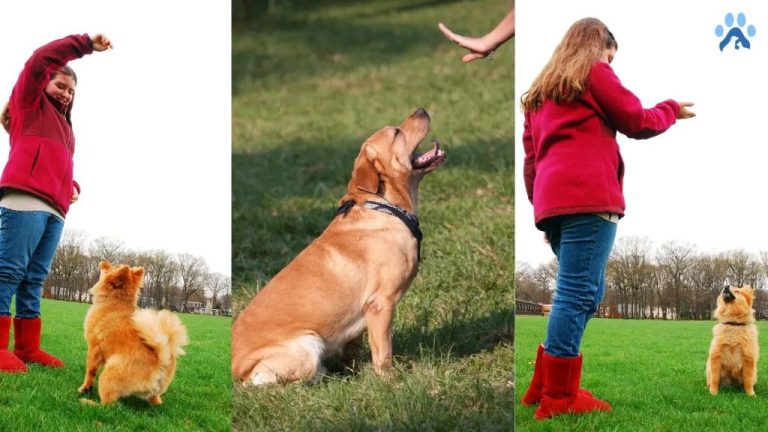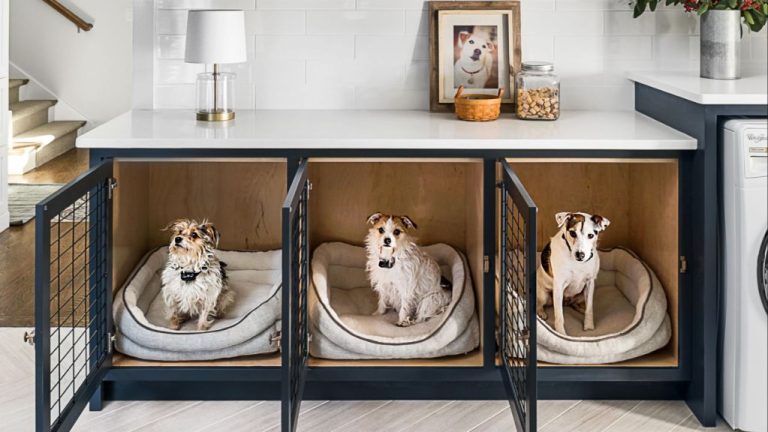Beginner’S Guide To Understanding And Preventing Separation Anxiety In Dogs
What is Separation Anxiety in Dogs?
Separation anxiety in dogs is defined as fear-based distress that occurs when a dog is left alone or separated from their owner/caregiver (source: https://www.smalldoorvet.com/learning-center/behavior/separation-anxiety-in-dogs/). It is considered an anxiety disorder that manifests as problematic behaviors when the dog is separated from their attachment figure.
Common symptoms and behaviors of separation anxiety in dogs include:
- Excessive vocalization – whining, barking, howling
- Destructive behavior – chewing, digging, scratching doors/floors
- Inappropriate urination and defecation
- Pacing and restlessness
- Depression and lethargy when alone
- Excessive salivation and panting
- Loss of appetite
- Escaping or attempting to escape
These anxious behaviors tend to occur within minutes of the owner’s departure, persist throughout their absence, and subside quickly when the owner returns (source: https://www.bluecross.org.uk/advice/dog/home-alone-separation-anxiety-in-dogs). Separation anxiety reflects a strong attachment between the dog and owner, and the dog’s dependence for security and comfort.
What Causes Separation Anxiety?
There are a few key factors that can lead to separation anxiety in dogs:
Fear of being alone – Dogs are pack animals and can become very distressed when left alone. Separation anxiety stems from a dog’s panic response when isolated from their family/pack. Changes in routine, a lack of proper socialization, or negative experiences while alone can trigger this fear (Source).
Change in routine – Dramatic changes in a dog’s routine or environment can trigger separation anxiety. For example, a new home, owner, work schedule, or family member leaving can disrupt their normal routine and lead to distress when left alone (Source).
Lack of proper socialization – Puppies that are not adequately socialized can develop attachment issues and experience greater distress when separated from their owners. Proper socialization teaches puppies how to be comfortable alone (Source).
Risk Factors and Common Breeds
Certain factors can increase a dog’s risk of developing separation anxiety. One major risk factor is being adopted from a shelter. Dogs adopted from shelters often have unknown histories and may have been abandoned previously, leading to attachment issues.
In addition, certain breeds tend to be more prone to separation anxiety due to their personality traits. Breeds like Labrador Retrievers, Golden Retrievers, and German Shepherds are people-focused and form strong bonds with their owners. Herding breeds like Border Collies and Australian Shepherds also frequently develop separation anxiety due to their high energy and need for constant stimulation (Rock Creek Crates). Smaller breeds like Chihuahuas and Yorkies are at risk as well since they can be clingy and dislike being left alone.
Other anxious breeds prone to separation anxiety include Cavalier King Charles Spaniels, Vizslas, French Bulldogs, and Shiba Inus. Owners of these predisposed breeds should take extra precautions to prevent and manage separation anxiety.
Prevention Tips
Preventing separation anxiety begins early with proper socialization as a puppy. Puppies should be gradually exposed to brief periods of separation from their littermates and owners starting at 7-8 weeks old. This helps them learn how to be alone without becoming distressed. Continue socialization into adulthood by exposing the dog to new people, places, sights, sounds, and experiences.
Create positive associations with being alone during puppyhood and beyond. Give the dog a food puzzle toy or long-lasting chew when you leave so being alone feels rewarding. Make your departures and returns low-key – no overly emotional greetings or goodbyes.

Stick to a consistent daily routine with set times for feeding, playing, training, exercise and potty breaks. Dogs feel more secure when they can predict their owner’s patterns. Avoid disrupting the routine as much as possible.
Sources:
https://www.fourpaws.com/pets-101/family-matters/helping-dog-deal-separation-anxiety
https://bondvet.com/b/how-to-prevent-separation-anxiety-in-dogs
Training Techniques
There are several effective training techniques to help dogs overcome separation anxiety including:
Desensitization Training
Desensitization training involves gradually increasing the amount of time a dog is left alone in order to get them accustomed to being by themselves. This is done by starting with very short departures of just a few seconds and slowly building up to longer durations over days or weeks. The key is to make sure the dog remains relaxed and below their anxiety threshold throughout the process. If they exhibit signs of stress, you have increased the duration too quickly. Here are some tips for effective desensitization training: https://www.rover.com/blog/heres-real-way-train-dog-separation-anxiety/
Crate Training
Dogs with separation anxiety often benefit from being left in an enclosed crate rather than having free roam of the house. The crate provides a safe and comfortable space for them. Crates should have comfortable bedding and toys to help them feel relaxed. It’s important to properly crate train dogs by making the crate a positive place and preventing negative associations. Feed meals in the crate and give special treats when confining your dog to create a positive association. Start with brief sessions and gradually increase duration. Proper crate training can be an excellent aid for managing separation anxiety.
Reward Calm Behavior
Dogs should be rewarded when exhibiting calm behavior rather than reactive or anxious behavior. This reinforces the desired mindset. Give treats, praise or affection when your dog is settled, relaxing or remaining calm in situations that normally trigger their separation anxiety. Show them that maintaining composure is what earns rewards. Consistency is key. If you reward anxious behaviors, you may inadvertently encourage them. Redirect any reactive behavior to a simple, calm command like “sit” before rewarding. With time, the dog will learn to remain relaxed and earn rewards by default, even when alone.
Lifestyle and Routine Changes
Making some adjustments to your dog’s daily routine can help minimize separation anxiety. Focus on providing more exercise, mental stimulation, and calm greetings and departures.
Getting more exercise and playtime is key. Be sure to take your dog on a long walk or have a rigorous play session before you plan to leave them alone. Tiring your dog out will make them more likely to simply rest while you’re gone. Interactive puzzle toys are also great for providing mental stimulation and distraction. Stuff the toy with treats and give it to your dog right before departing so they associate you leaving with something fun to do (Source).
It’s best to avoid highly emotional greetings and goodbyes. Keep arrivals/departures low-key and boring. Don’t give excessive affection or make a fuss when leaving. Simply come and go matter-of-factly instead (Source).
Medications and Supplements
There are two main medication options for treating separation anxiety in dogs – prescription anti-anxiety medications prescribed by a veterinarian and natural calming supplements.
Prescription anti-anxiety medications like fluoxetine and clomipramine can help reduce anxiety and make dogs less distressed when left alone. These medications alter brain chemistry to increase serotonin and other neurotransmitters that have a calming effect. According to https://petswithproblems.co.uk/medicine-for-dog-separation-anxiety/, side effects are rare with proper veterinary guidance and monitoring.
Natural calming supplements like melatonin, tryptophan, chamomile, and CBD oil may also help anxious dogs feel less stressed. These supplements work by promoting relaxation, reducing excitability, and supporting brain function without sedative effects. According to https://zamipet.com.au/blogs/pet-health-hub/dog-separation-anxiety-how-to-calm-anxious-dogs, they can be used alone or alongside other training and treatment methods.
It’s important to consult with a veterinarian before giving any medication or supplement to ensure proper dosage, safety, and efficacy. Anti-anxiety medications and natural supplements can be invaluable tools as part of an overall treatment plan for separation anxiety in dogs.
Seeking Professional Help
In severe cases of separation anxiety, it’s often necessary to seek professional help from certified dog trainers or behaviorists. These experts have specialized education in modifying anxiety-based behaviors in dogs.
Certified trainers and behaviorists can design a customized behavior modification plan for your dog. This involves techniques like systematic desensitization, counterconditioning, and reinforcement methods. Having an expert guide you through implementing these techniques can greatly increase your chances of success.
You should look for trainers certified through respected organizations like the Certification Council for Professional Dog Trainers (CCPDT) or the International Association of Animal Behavior Consultants (IAABC). Avoid trainers who use punishment, collar corrections, or other aversive methods which can make anxiety worse.
Your veterinarian can also provide anxiety medication for short-term use as part of a behavior modification plan. They can refer you to a veterinary behaviorist if medications are needed long-term. Veterinary behaviorists are licensed veterinarians with additional specialized training in animal behavior.
Working with professionals provides tailored guidance and accountability. With their expertise and support, you can better help your dog overcome separation distress.
Sources:
https://read.cholonautas.edu.pe/en/treating-severe-separation-anxiety-in-dogs.html
Preparing for New Environments
Transitioning to a new home or environment can be stressful for dogs prone to separation anxiety. To help ease the transition, gradually expose your dog to being alone in the new home starting with short periods of time. Provide a familiar blanket or toy for comfort. You can also try leaving the radio or TV on to provide background noise.
For travel, bring along familiar items like their bed, a favorite toy, or an article of clothing with your scent. Try to maintain their routine as much as possible when away from home. Bring their crate for a quiet space and give them access to an area they can look out windows. Daily exercise can help relieve stress. Calming supplements or anti-anxiety medication may also ease travel anxiety if recommended by your veterinarian (cite: https://www.webmd.com/pets/dogs-separation-anxiety). With patience and preparation, you can help minimize stressful transitions for your anxious dog.
Long-Term Management
Managing separation anxiety in dogs is an ongoing process that requires consistency and lifestyle adjustments to see lasting improvements. Here are some tips for long-term management:
Stick to a routine and keep training sessions consistent. Dogs thrive on predictability, so maintaining a regular schedule for things like walks, feeding times, and training helps reinforce good habits even when you are away (DeMartini, 2020).
Make lifestyle adjustments based on your dog’s needs. For some dogs, providing puzzle toys, TV or music for distraction helps. For others, limiting access to windows and outdoor stimuli is better. Know your dog’s triggers and accommodate them.
Use management tools like crates, baby gates and pens strategically. These can be introduced through positive training so dogs see them as safe spaces, not punishments.
Keep monitoring your dog’s progress through cameras, journals, or caregiver reports. Setbacks can occur, so be prepared to revisit training or adjustments if needed.
Consider anti-anxiety medication if recommended by your vet for severe cases unresponsive to training. But medication should complement behavior modification, not replace it.
Get friends or family to engage in training as well so techniques are reinforced when you are not there. Consistency across all caregivers is key.
Be patient and committed. With continued positive training and lifestyle adjustments tailored to your dog’s needs, long-term improvement in separation anxiety is very possible.

